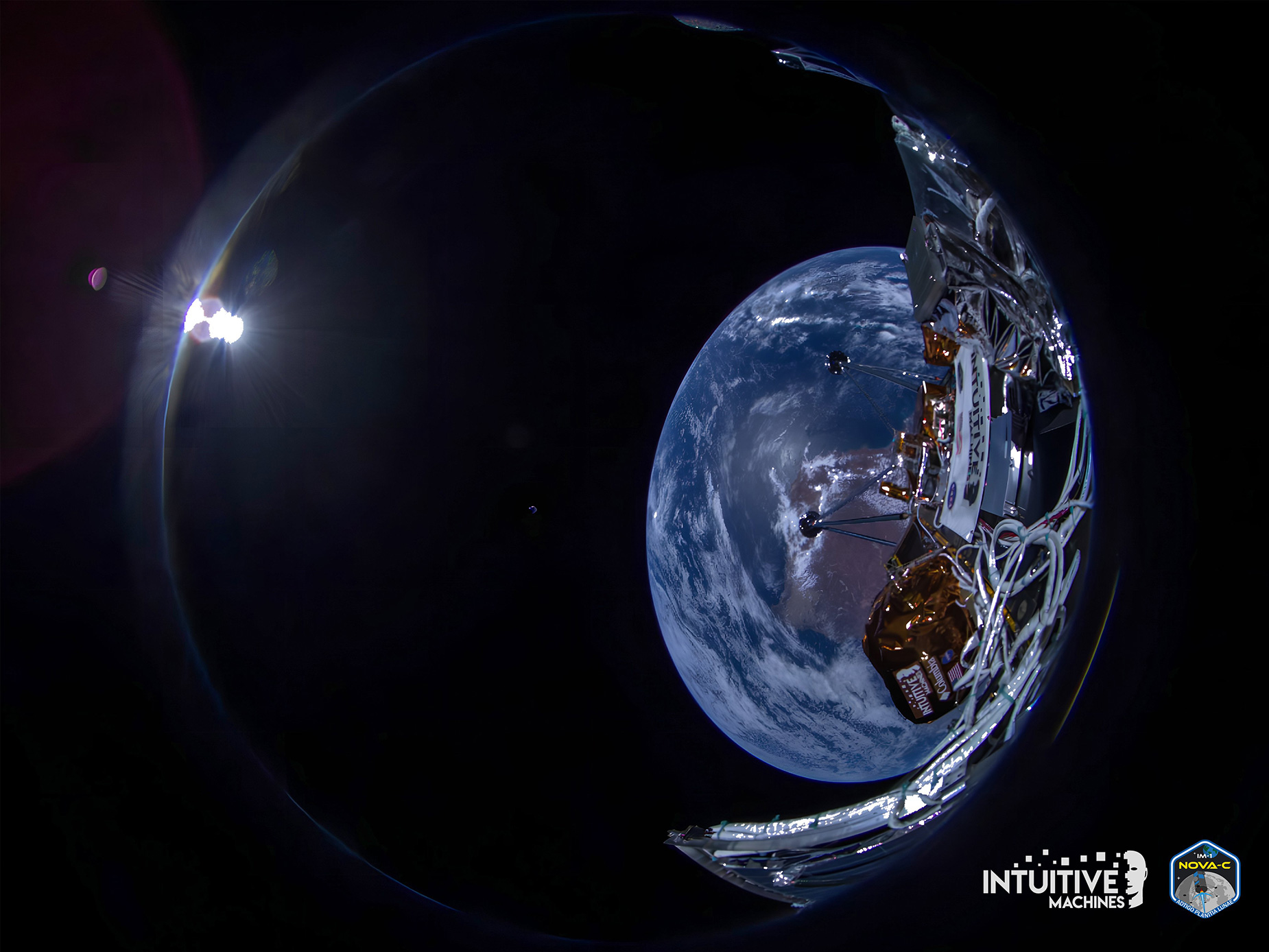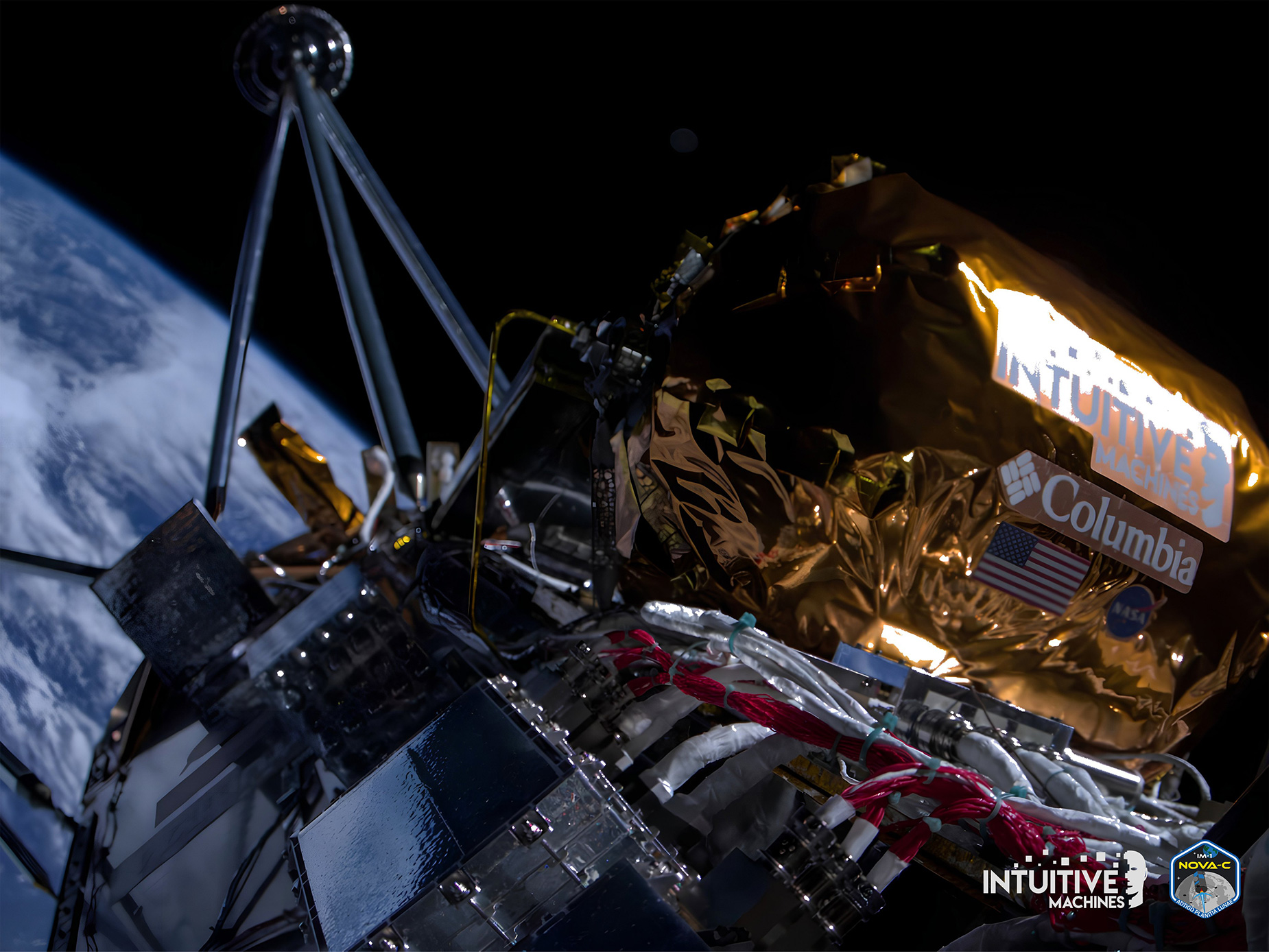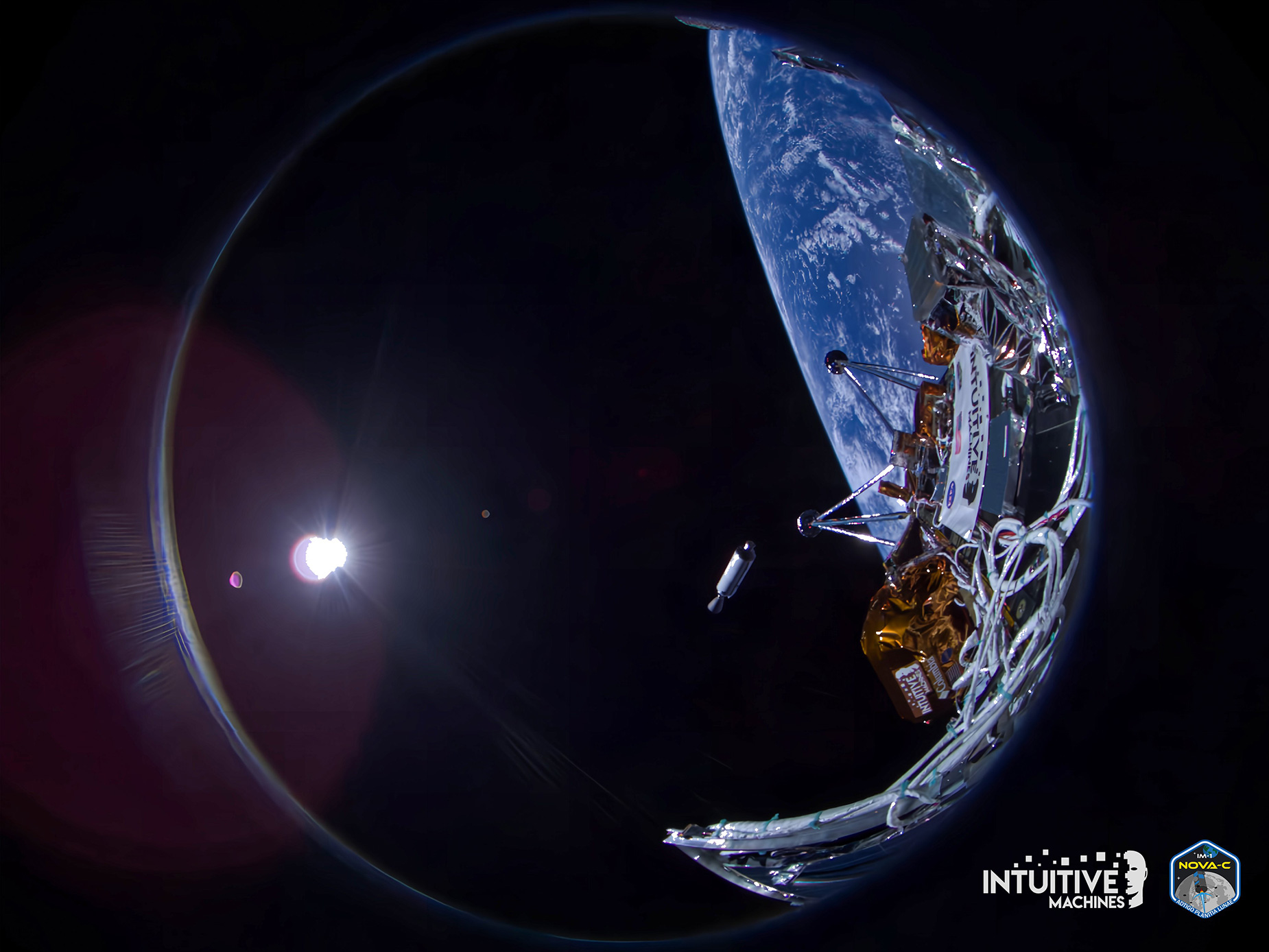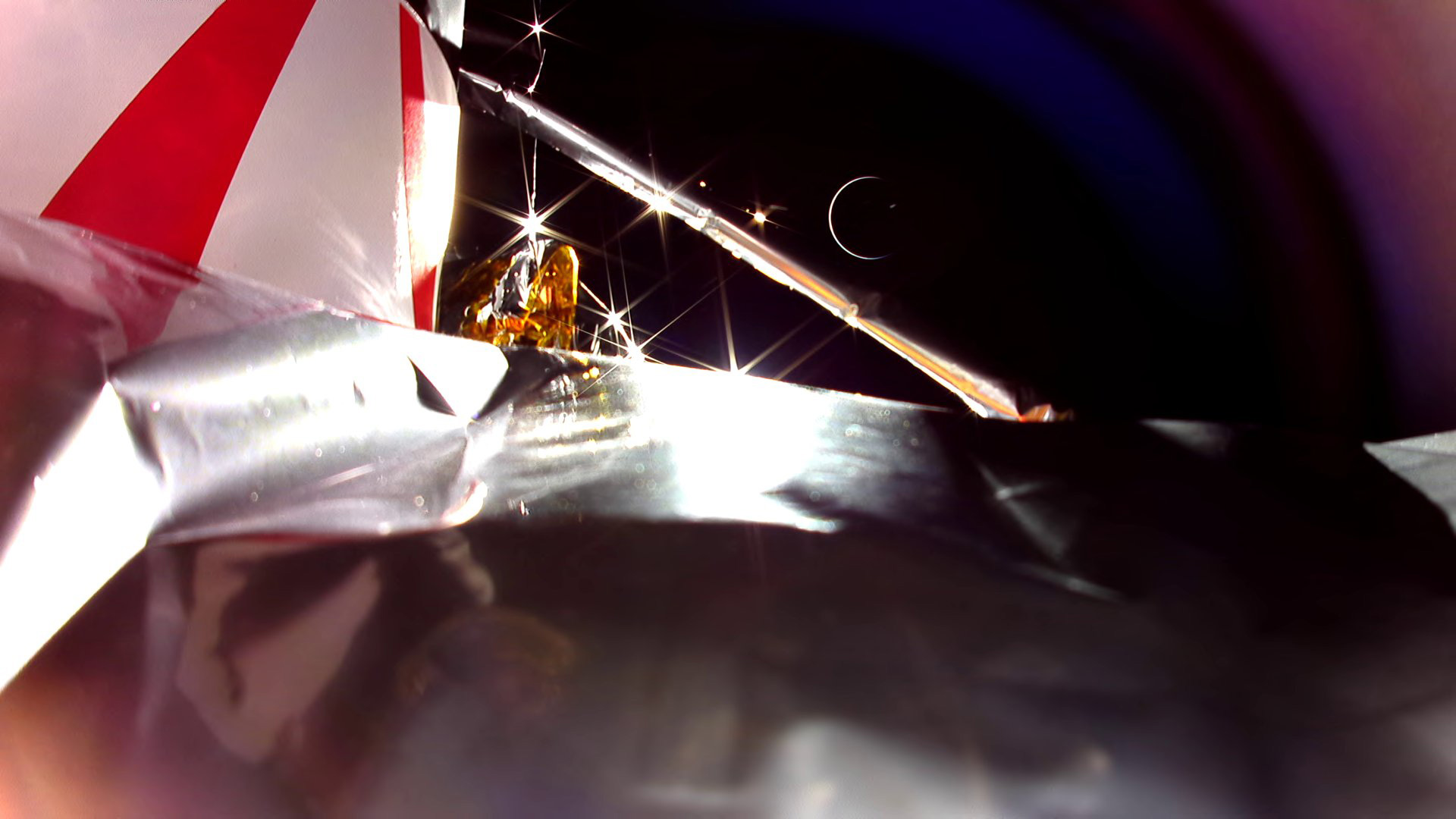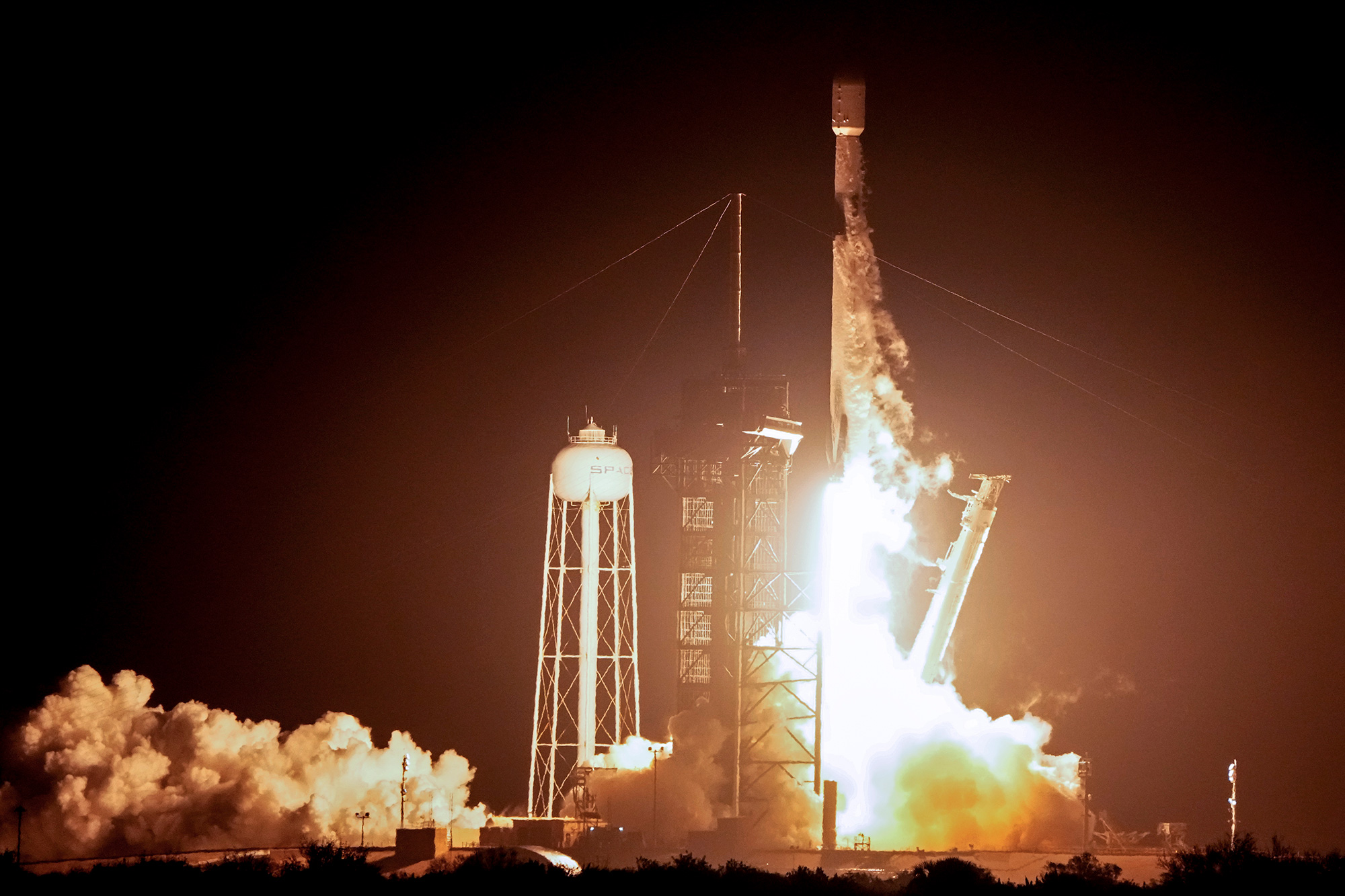
The Odysseus lunar lander, nicknamed “Odie” or IM-1, is aiming to make the first touchdown of a US-made spacecraft on the moon in five decades on Thursday.
Its launch followed closely on the heels of a separate US lunar landing mission that failed in January. NASA has ramped up the development of robotic spacecraft via private partners to evaluate the lunar environment and identify key resources before it attempts to return astronauts to the moon later this decade.
Odie's journey to the moon: A SpaceX Falcon 9 rocket fired Odie into Earth’s orbit last week, blazing to speeds topping 24,600 miles per hour (about 40,000 kilometers per hour), according to Intuitive Machines, the Houston-based company that developed the spacecraft under contract with NASA through its Commercial Lunar Payload Services program.
After burning through its fuel, the rocket detached from Odie, leaving the lunar lander to fly solo through space. The robotic explorer then consulted an onboard map of the stars so it could orient itself in space, pointing its solar panels toward the sun’s rays to charge its batteries.
The spacecraft entered orbit around the moon, which is roughly 250,000 miles (about 400,000 kilometers) away from Earth, on Wednesday morning, according to the company.

